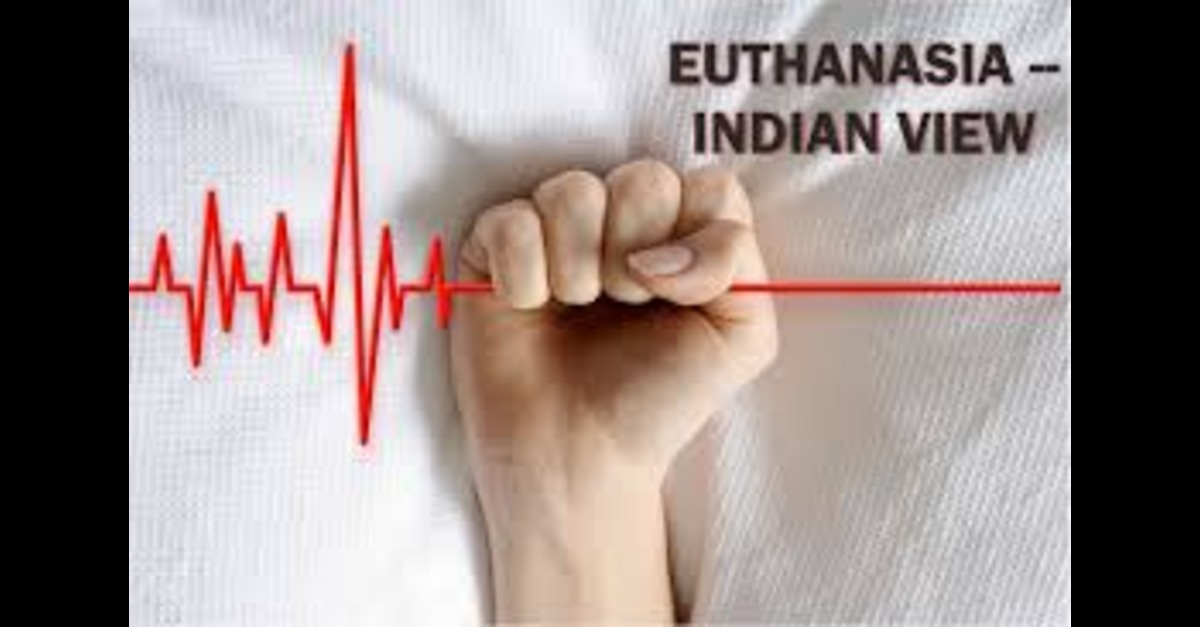ABSTRACT
Euthanasia continues to be one of the most discussed legal questions worldwide, but particularly in India where the mixture of law, medicine, and morality makes it difficult to regulate. The concept of a dignified death is always at the center of this debate in India where arguments are made by some that individuals have the right to die with dignity. This article discusses the legal position of euthanasia in India, the challenges that can be faced when actually enforced and suggestions for a proper process to approach regulation. The Aruna Shanbaug (2011) case and Common Cause (2018) judgment have opened the door to debates on passive euthanasia, but active euthanasia is still prohibited under Section 302 and Section 306 of the Indian Penal Code (IPC).
INTRODUCTION
Around the world, nations such as the Netherlands, Belgium, and Canada have legalized active euthanasia, whereas India, the United States, and Spain are still divided over its acceptability. Passive euthanasia was legalized in India by judicial interpretation in 2011 and reaffirmed in 2018, but the lack of definite legislation leaves a lot of loopholes in how it is implemented. The Indian judicial system has always given importance to the sanctity of life over the right to die on the basis of Article 21 of the Constitution, which guarantees the right to life and personal liberty. Nonetheless, judicial precedents have gradually come to accept the right to die with dignity. This article discusses the existing legal framework, challenges, and reforms needed to ensure that euthanasia is practiced within a fair and ethical framework and create a balance between right to life and the right to die with dignity.
UNDERSTANDING EUTHANASIA
Euthanasia is classified into different categories based on consent and the method of administration:
- Active Euthanasia vs. Passive Euthanasia: Active euthanasia involves action which is direct which can include things like administering a lethal injection to end a person’s life. This is illegal in India and is considered equivalent to murder under Section 302 of the IPC. Passive euthanasia involves withdrawing life-sustaining treatments to allow a terminally ill patient to die naturally. The Supreme Court legalized passive euthanasia in the Aruna Shanbaug case (2011) and later reinforced it in Common Cause (2018) but still following strict and rare conditions.
- Voluntary vs. Non-Voluntary Euthanasia: Voluntary euthanasia occurs when a mentally competent patient consents to ending their life due to unbearable suffering whereas non-voluntary is performed when a patient cannot provide consent, such as in cases of coma. For the non-voluntary form of euthanasia, all decisions are made by legal guardians or medical professionals.
Despite there being such broad legal distinctions, euthanasia presents moral and ethical dilemmas, requiring more regulations to bring it to enforcement in law.
LEGAL CHALLENGES AND GAPS IN INDIAN FRAMEWORK
The enforcement of euthanasia laws in India faces multiple challenges:
- Lack of a Legislative Framework: While passive euthanasia was legalized under very strict conditions, no proper statute exists to regulate its implementation, leaving it to judicial interpretations.
- Ethical Dilemmas: The strict conditions for passive euthanasia are based on determining whether a person genuinely desires euthanasia due to terminal illness or external pressures remains a challenge.
- Medical Uncertainty: Diagnosing a terminal illness or assessing the irreversibility of a condition is difficult at some points making it risky to authorize euthanasia which would mean a fine line between dignity, death and murder.
- Fear of Misuse: The possibility of forced or coerced euthanasia by family members for financial or personal gain raises many concerns about fraudulent claims.
RECOMMENDATIONS FOR INDIA
A well-regulated euthanasia law can balance ethical concerns with legal safeguards. While the judiciary has taken progressive steps, legislative intervention is necessary to provide comprehensive clarity on the process.
- Enact a Uniform Euthanasia Law: A centralized law should outline eligibility, procedural safeguards, and penalties for misuse. This would prevent inconsistencies and remove subjectivity and ensure fair implementation nationwide.
- Oversight: Establishing medical oversight mechanisms is crucial to maintaining transparency and preventing abuse. Ethical boards composed of medical experts, legal professionals, and ethicists should be set up to evaluate euthanasia requests.
- Psychological Evaluations: Mandatory mental health assessments can ensure that patients seeking euthanasia are not suffering from treatable depression. This will help differentiate between genuine euthanasia cases and those that arise from temporary distress or coercion.
- Palliative Care Services: Greater investment in pain management and end-of-life care can reduce unnecessary euthanasia requests. When patients have access to adequate pain relief and hospice care, the demand for euthanasia may decrease naturally.
By implementing these measures, India can ensure that euthanasia laws are both humane and legally sound, minimizing the potential for exploitation and ethical dilemmas.
CONCLUSION
Euthanasia in India remains a highly sensitive issue, intertwining legal, medical, and ethical dimensions. While the Supreme Court has taken progressive steps to recognize passive euthanasia, the absence of statutory law continues to create ambiguity in enforcement. A balanced approach must be taken, one that neither denies the right to die with dignity nor opens the door to potential exploitation. By addressing legal gaps, improving medical clarity, and ensuring ethical oversight, India can establish a clear and humane euthanasia law that aligns with both constitutional values and human rights principles.
“PRIME LEGAL is a full-service law firm that has won a National Award and has more
than 20 years of experience in an array of sectors and practice areas. Prime legal falls
into the category of best law firm, best lawyer, best family lawyer, best divorce lawyer,
best divorce law firm, best criminal lawyer, best criminal law firm, best consumer
lawyer, best civil lawyer.”
WRITTEN BY TANMAYEE VELLORE RAGHUNANDAN


